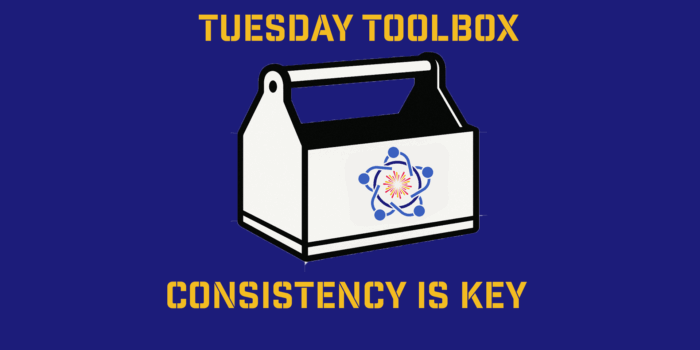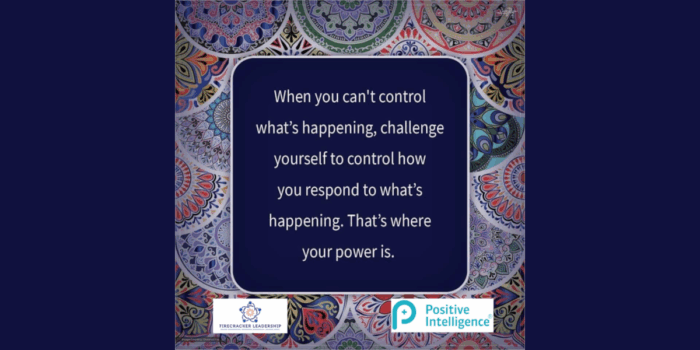What hasn’t happened this year that needs to? Would getting clarity help?
Vanessa Van Edwards shared 7 tips to be a better listener. Pick one to improve upon this week? Which are you picking?
When most people think about being interesting or charismatic, they think about talking or saying interesting things. But you can actually be super charismatic while just listening. Here’s how!
Good listening skills are important as they form the foundation of deep and meaningful relationships. When you listen to others well, you can learn more about them and minimize the number of miscommunications.
Building the skill of charismatic listening can help you both professionally and personally. Team members, colleagues, and clients you work with want to feel that they are being heard. And they’ll probably consider you more trustworthy and helpful if they trust that you’re listening to their concerns.
Science shows that good listening correlates with good leadership. There is as much as a 40% variance between the effectiveness of teams that are led by good listeners and those that are not.
In your personal life, being a good listener can help you deepen friendships and romantic relationships and build meaningful connections with your family members.
While someone is talking to you, follow the principle, “Show, don’t tell.” Use these non-verbal cues to show them you engage with what they’re saying. People are typically more likely to speak up and share when they feel heard.
#1 Nod yes
Head nods have a lot of meaning. Your friend might give a quick upward movement of their head as a way of saying, “Hey, good to see you,” or a downwards nod to show agreement. And we love when people agree with us. Science shows that people tend to like those who are like-minded.
Show your support and encourage others to keep talking using the slow triple nod. This cue shows you are engaged and makes you more charismatic.
Doing a triple nod during emotional points can help reaffirm your conversation partner’s feelings and help them feel understood.
#2 Be an emotional highlighter
Help other people feel understood by highlighting their emotions. If someone says something sad, show sadness to them. If someone says something exciting, get excited for them. If someone is surprised, mimic their surprise.
You can do this with your facial expressions and your vocal expressions. Everyone loves a good “aha” or “wow” moment.
Here are more ways you can do this:
When a loved one tells you they’re feeling sad and overwhelmed, show sadness by scrunching your eyebrows together while raising the inner corner and briefly pulling down the corners of your mouth.
If your partner is telling you about a new opportunity for growth at work, let your face brighten with excitement by smiling and opening your eyes wide. Pair it with a “That’s amazing!” or “No way!” when the conversation lulls to encourage them to tell you more.
The next time your friend is sharing with you about someone being rude to them, show frustration by drawing your eyebrows together and down, flaring your nostrils, and tightening your lips.
Remember, most facial expressions happen in a flash and last, at most, a few seconds. Holding a frown, for example, for a long time can make it feel insincere. Avoid this by showing the emotion on your face and then relaxing your facial muscles again.
#3 Lean in
When we like something, we lean into it.
Research has found that the act of leaning in actually activates the motivation part of your brain.
We lean in when we want to see something, smell, or hear something better.
Physical stance and emotional openness are interconnected. Yes, your body reflects how you’re feeling on the inside, but your body can also impact how you feel. In this instance, a lean can help you engage with and listen well.
How to use this in conversation:
When listening and someone says something especially interesting, lean in or take a step towards them.
If you’re sitting across the table from someone, like on a first date, rest your arms on the table and lean forward.
If you’re hanging out with a group of friends, sitting on couches or chairs, lean towards the person speaking by placing your elbows on your knees as you lean forward.
Want more cues? This universal cue (and more) is detailed in the best-selling body language book, Cues.
Unlock the Secrets of Charisma
Control and leverage the tiny signals you’re sending—from your stance and facial expressions to your word choice and vocal tone—to improve your personal and professional relationships.
GET CUES
#4 Hold eye contact
Eye contact is one of the most powerful ways to show that you are listening and interested in what someone is saying.
However, too much eye contact can be threatening rather than friendly.
This sparks the question: how much eye contact is the right amount?
Thankfully, researchers asked the same question. They found that the average preferred length of eye contact is 3.3 seconds. This means holding eye contact for roughly 3-4 seconds when you’re having a conversation. Then, glance away before re-establishing eye contact.
When having a conversation, look at the person you’re listening to roughly 70% of the time. Then, when it’s your turn to speak, make eye contact roughly 50% of the time.
This will help you establish that you are present and engaged without seeming threatening.
Action Step: The next time you’re standing in front of a mirror, make eye contact with yourself while quietly counting “one-Mississippi, two-Mississippi, three-Mississippi” in your head.
Then, look away.
How did it feel? Did it feel like a natural amount of time to make eye contact?
#5 Let your presence be felt
Small gestures of physical touch can be incredibly powerful forms of nonverbal communication. But not all physical contact is appropriate, depending on the circumstances. Whether a handshake or a hug, you can choose a physical nonverbal to show that you fully engage with the speaker.
Here are some examples of appropriate physical contact:
Acquaintance or colleague: Shake their hand or pat their shoulder to acknowledge their presence.
Casual friends: Give them a high-five when they tell you about a recent accomplishment. For example, if they tell you, “I went to the gym 3 times last week,” instead of saying, “Good job!” pair it with a high-five.
First date: To be a little flirty, casually touch your date’s forearm as they speak, but don’t linger for too long. This will help assure them that you are paying attention to what they’re saying.
Loved one: Sit a little closer as they tell you about what is going on in life. Place your hand on their knee, hold their hand, or put your arm around their shoulder. This shows that you’re present and engaged as they are speaking.
Some people don’t prefer physical touch. Start with small gestures like patting their shoulder and see how they respond. If they pull away or quickly glance at your hand, they may not be a physical touch person.
Note: It can be a good idea to stick to a “safe” physical touch. These areas are further away from the torso—think a handshake, pat on the shoulder, or high-five. You’re still letting your presence be felt and reacting to what you’ve been told without being invasive
#6 Use powerful nonverbal cues
Microexpressions are tiny facial and body expressions that communicate what you’re thinking. They’re a little like a secret non-verbal language. Using microexpressions demonstrates that you are deeply engaged in the conversation.
Here are a few examples of nonverbal cues you can use:
Eyebrow flashes: This is a small upwards movement of the eyebrows. It communicates interest, agreement, and excitement. Researchers have found that this is a gesture recognized worldwide!
How to use it as a listener: Eyebrow flashes show curiosity. Raising your eyebrows and leaning forward is basically like saying, “Tell me more!”
Head tilt: Tilting your head to the side can communicate openness. It is a great way to communicate trust. This is because the neck is vulnerable, and tilting your head exposes more of the neck. It communicates that you trust the person you’re with.
How to use it as a listener: The head tilt is a warm cue. You can use it to encourage the person you’re speaking with to open up. Try using it during a lull in the conversation. Tilt your head a little to the side and wait a while to see if the person has more on their mind.
Open palms: People see closed palms as potentially threatening. After all, who knows what you might be hiding in your hands?
How to use it as a listener: Keep your hands where others can see them. Instead of sticking your hands in your pockets or crossing your arms, put them on the table before you, relax at your side, or hold a drink.
Fun Fact: Researchers have found that holding a warm beverage led to more emotional warmth. If you want to help comfort someone or encourage them to open up, offer them a hot cup of coffee.
Uncrossed arms: While there can be many reasons for crossed arms, they can signal a defensive or closed mentality. Keep your arms uncrossed to show openness.
How to use it as a listener: Let your arms hang relaxed at the side of your body.
If you’re having a conversation, run through a quick checklist of items to make sure you’re physically showing openness and a desire to listen.
#7 Make space—physically
One aspect of listening well is creating emotional space for someone to express their experiences. Use your physical actions and the space around you to reflect this emotional space.
One of the quickest ways to do this is by turning your phone upside down or putting it away altogether.
Another way to make space is by turning your body towards whoever you’re speaking with while setting aside what you were working on.
Here are more examples of making physical space:
If you’re reading a book and your partner starts to tell you about their day, close your book and set it to the side.
If you are sitting behind your desk and at your computer when a team member asks to chat, turn to face them while pushing your computer monitor to the side. You can also relocate from behind the desk, so there isn’t a barrier between you.
The next time you meet someone at a coffee shop, stand up to greet them instead of remaining seated.
Pro Tip: Phones are sometimes a necessary form of communication! Talk about it if you need to keep an eye on your device.
Here are some examples: “I’m just going to leave my phone here. I just hired a new nanny and want to ensure she can contact me with any questions.” Or, “I’m listening to you. I just need to quickly send this Slack message to my teammates, so they know where I’m at with this project.”
Just mentioning it and giving a little insight into what’s going on removes the feeling that your attention is unnecessarily divided.
Listening Well Doesn’t Necessarily Mean Talking Less
Being a good listener involves engaging with the speaker and remembering what they’ve told you. While the first step of listening well may be talking less, there’s much more to it.
Talking less doesn’t necessarily correlate to listening more. These two scenarios help demonstrate that. Pay attention to the listener’s nonverbal behaviors in these scenarios.
First Scenario:
Anita walks into her sister’s room, plops down on the couch, and says, “I had a really rough day today. Can I tell you about it?”
Her sister, Maggie, is sitting at her laptop and says, “Sure,” but doesn’t turn away from her desk and keeps scrolling through Pinterest.
Anita feels a little disappointed that Maggie doesn’t seem more engaged but decides to tell her anyway. She starts talking about how discouraged she is by her track and field coach. He’s having Anita run the 800m race, and she just doesn’t feel like it’s her strength.
Maggie mutters, “Mhmm,” under her breath, and when Anita finishes speaking, she says, “I don’t get why that’s a big deal. You just need to train a bit more. You’ll get it!”
Anita feels discouraged and sad that Maggie doesn’t seem to get it. She mumbles, “Yeah, I guess so,” and leaves the room.
Even though Maggie wasn’t speaking during this exchange, her body language communicated that she wasn’t listening. Then, her response indicated that she hadn’t done the work to understand what was at the heart of Anita’s frustration.
Second Scenario:
John has been assigned to a new project at work. It’s a huge honor, and he’s stressed that he won’t do as well as is expected of him.
His boss, Jaimie, notices that he seems nervous and calls him into her office to talk. She asks John how he’s doing with the new responsibility.
John starts to tell her that he’s honored and really wants to do a good job.
As he starts talking, Jaimie closes the lid of her laptop and slides it over to the side of the table. She leans her forearms on the desk between them and slowly nods her head as John is talking.
Once John finishes sharing, Jaimie takes a moment before responding. She begins her response by reflecting on what she heard. She says, “It sounds like you’re excited but a bit nervous. I want you to know that I have full confidence in you. Also, I want to support you in any way I can. Please know that my door is open if you ever want to bounce ideas around or problem-solve an issue.”
Jaimie showed she was listening well before she ever started speaking. By removing distractions between them, leaning forward, and slowly nodding her head, Jaimie communicated that her full attention was on John.
You can show others you’re engaged by asking good questions or reflecting on what they’ve just told you.
How to Be a Charismatic Listener While on a Phone Call
Talking on the phone can add a challenging layer to showing active listening. After all, most of these cues are ones the other person would see.
So what do you do to demonstrate listening when you’re not visible to the other person?
Play up the verbal aspects of your charismatic listening.
For example, if you’re on a phone call with a client, instead of just nodding your head in agreement, express agreement once they’ve finished talking. You could say, “Thanks so much for sharing your concerns with me. Let’s find a strategy for moving forward.”
Also, remember to use your nonverbal “Mhmm’s” and “Aah’s.” You can make these little sounds that don’t interrupt the speaker on the other end of the line but let them know you’re engaging with them.
Action Step: You might be surprised how much facial expressions affect the tone of voice! Listen to the difference for yourself.
Pull out your phone and record yourself saying the same sentence, “Wow, I can’t believe that is happening!” Three times in a row.
The first time, say it with a big smile. The second time with a look of disgust on your face, and finally, while looking sad. Now, listen back to it and see if you can hear the difference in the tone of your voice.
You can also stand up and imagine the person you’re speaking with is right in front of you. Doing this may help you sound more confident and feel confident as well.
Listening > Speaking
Listening well can help you have deeper and more fulfilling relationships. This can result in professional and personal well-being. You can also gain wisdom and grow in your empathy by becoming a good listener.
Do your best to listen with the intent to learn. Here are a few things to keep in mind as you do that:
Use body language: Leaning in, holding eye contact, and using appropriate physical touch are all ways you can demonstrate that you’re engaged and listening. Use these throughout the conversation to show engagement.
Reflect back emotions: Being an emotional highlighter can encourage others to open up to you more. You may be tempted to say immediately, “Well, at least [insert unrelated scenario] didn’t happen to you! You should count your blessings.” Don’t do it. This will only lead to the person feeling unheard and frustrated. Instead, use your facial expressions to reflect what they are telling you.
Remove distractions: When speaking with someone, set your devices aside, close the book you were reading, and turn to face them. This communicates that you fully engage with what they are saying and intentionally create a safe space for them to share openly and honestly.
Show you’ve listened: Within conversations, there will inevitably be a time when you will stop listening and start speaking. Do your best not to plan what you’re going to say. Take a moment to think before you speak rather than only half-listening to them as they talk.
When you start speaking, please demonstrate that you’ve been listening to them by first reflecting on what they’ve said. Whether that’s, “I’m sorry you’ve been feeling…” or “It sounds like a lot is going on right now in your life….”
Keep the conversation focused on them rather than putting yourself in the spotlight. And don’t hesitate to ask questions! This will demonstrate your active listening.
Read more at: https://www.scienceofpeople.com/listening-skills/?_cio_id=98c7042ed140f3dd54#utm_campaign=The+secret+to+appearing+interested+and+invested+in+what+others+have+to+say&utm_content=The+secret+to+showing+interest+in+what+others+have+to+say&utm_medium=email_action&utm_source=customer.io



